|
The People's Republic of Laywenrania
Volksrepublik Laywenrania
|
||||||
|---|---|---|---|---|---|---|
|
||||||
|
Motto: Use every day to make a better world |
||||||
|
East of New Warsaw Pact
|
||||||
|
Capital and largest city |
Misor | |||||
|
|
||||||
| Official languages | Laywenranian | |||||
|
|
||||||
| Ethnic groups |
Laywenranians(96,7%) Other(3,3%) |
|||||
|
|
||||||
| Demonym | Laywenranian | |||||
|
|
||||||
| Government | ||||||
| - | Chairman | Wenin | ||||
|
|
||||||
| Formation | ||||||
| - | Independence | 1925 | ||||
|
|
||||||
| Area | ||||||
| - | Total | 252'752,5 km2 | ||||
|
|
||||||
| Population | ||||||
| - | census | 45,7 Million | ||||
| - | Density | 180,8/km2 | ||||
|
|
||||||
| GDP (nominal) | 2013 estimate | |||||
| - | Total | $ 2,25 x 1012 | ||||
| - | Per capita | $49'235,51 | ||||
|
|
||||||
| Gini (2014) |
0.02 low |
|||||
|
|
||||||
| HDI |
0.985 (Steady) very high |
|||||
|
|
||||||
| Currency |
Sonu (PLS)
|
|||||
|
|
||||||
| Date format | dd-mm-yyyy | |||||
|
|
||||||
| Drives on the | left | |||||
|
|
||||||
| ISO 3166 code | PRL | |||||
|
|
||||||
| Internet TLD | .lay | |||||
The People's Republic of Laywenrania or simply Laywenrania is a country located in the eastern part of the Catrutic Ocean. It is located on multiple Islands and rather isolated form other countries. With a rich cultural history, Laywenrania has been the home of influential artists, musicians, inventors and sportsmen, and features a variety of tourist attractions.
According to official Laywenranian research, the word Laywenranian is derived from "Layw", meaning "Land" ("country") and "Enran", an old word for a penguin. Therefore Laywenrania can be translated as "country where the penguins live".

Laywenrania is an island country which consists of multiple separate islands adding up to a total land area of 252'752,5 km². The six larger islands are inhabited by humans. The coast is dominated by rocky cliffs and small, pebbly isles and coral reefs around the main islands, only occasionally the cliffs vanish and give space for beaches and ports. Many caves can be spotted at the coasts, which are inhibitated by various animals. It isn't recommended to visit them, as the changing tide can push into them. The terrain is distributed roughly equally between mountains, hills and plains. The Laywenranian Islands are rather isolated from other countries and landmasses, the nearest other country beeing Dimasalang, which is 500 km away at the nearest point. Other close countries are Damanucus on the north, 1350 km away and Altaggannah on the west, 1781 km away. The landmass of Australien is located to the south.
The Kelefas highland mountains dominate the east of Mahoro, with 4 mountain ranges reaching above 2'000 m, the highest point is the Molveanu Peak (2'544 m). A high percentage (77% of the land area) of the country is covered with natural and semi-natural ecosystems. Laywenrania has one of the largest areas of undisturbed forest in the New Warsaw Pact covering almost 57% of the territory, most of it being tropical rainforests. There are about of the total area of protected areas in Laywenrania covering 13 national parks and three biosphere reserves. The Steul Delta, at 2'800 km2, is the largest continuous marshland in the New Warsaw Pact. The islands have a variety of caves both above and below sea-level. Two of the caves above sea-level also contain underground lakes and are open to tours.
The Steul is the biggest Laywenranian river and flows from the Kelefas mountains down into the plains of Mahoro. The Steul is by far Laywenrania's most important river, not only for transportation but also for the production of hydroelectric power. Other large rivers in Laywenrania are the Ilmur and the Lana on Rosomo, the Miloc on Mures and the Kiula on Salken.
The clime of Laywenrania is tropical. In the lowlands the temperature is around 25°C year round while in the highlands it is around 19°C. The average annual Temperature is 12°C. Rainfall typically ranges from 2,000 to 4,000 millimeters per year, with some higher peaks on the most exposed slopes, where it reaches as high as 7/8 meters (23/26 feet) per year, while it drops to 1,000/1,500 mm (40/60 in) on the coast. Natural disasters are earthquakes.
Through the large protected areas of forests, which are widely undisturbed by industry and humans, there grew a wide flora and fauna with a big biodiversity. There are harsh laws to protect this diversity. Hunting is not allowed and under massive penalty up to death penalty. Notable animals include jaguars, ocelots, a large variety of butterflies and birds, elelphants, bears and capybaras in swampy areas. Scientists counted thousands of plant and animal species and it is estimated that many more are yet not discovered. As the nature in Laywenrania is largely not influenced by humans it shows a wilderness which is not seen anywhere else in the New Warsaw Pact. Many animal races only exist in Laywenrania.
It is estimated that 96,4 percent speak Laywenranian monolingually while the remaining 3,6 percent speak a secondary language due to immigration. Language and culture courses are mandatory for immigrants
There is no state religion in Laywenrania and most of the population is atheistic.
Laywenrania has universal health care and primary care is available throughout the islands. Laywenranian health care distinguishes itself through a high population-to-physician-ratio (143 inhabitants per medician) and a high integration (outpatient clinic). Life expectancy at birth is 79 years for males and 82 years for women, infant mortality is 4 deaths per 1'000 births, the under-5-mortality is 7,4 deaths per 1'000 births. The quality of the child- and mother-friendly hospitals fulfils highest world-standards. The tuberculosis rate is very low with 7 infections per 100'000 inhabitants. The number of industrial accidents is very low with 1,6 accidents per 1'000 workers per year. The probability of dying between 15 and 60 years m/f (per 1 000 population, 2013) is 115/73. Medical drugs are distributed for free to people who need them. The new "Laywenrania stays sporty"-program motivated many people to drive bicycle instead of their cars and to do sports at least one day in the week. Many people enjoy to take a walk in the forests and the fresh and clean air is certainly helping at keeping them healthy. Working shifts in medical centres are commonly under 5 hours to ensure maximum concentration.
In Laywenrania the school visit is obligatory for every child from the age of 6 to the age of 16. Every child visits 10 years of school, called the "Polytechnische Oberschule". The largest percentage of the government budget (15,1% in 2014) is put into Education. The schools are offering afternoon care for the children if the parents have to work at this time, during this care the pupil can do their homework and exercises and after that play with their schoolmates and friends. After eight years, pupils with good results can switch to the "Erweiterte Oberschule" and get a higher certificate. The EOS takes four years to complete. The main goal of education is to give a broad and simultaneously deep knowledge and ensure to awake and stimulate the interests of the pupil. "Learn with fun and you learn better" is the motto of the educational system. The covered areas of education go from classic mathematics to language, over geography, social studies, chemics and physics, biology and craft lesson. There are multiple universities in the big cities, in Alandron (engineering, concentration on ship design, biological university), Kalimdra (technical university, concentration on chemical processes), Misor (common university, no concentration, covering nearly all aspects), Berunag (Engineering University with concentration on Electricity) and Foralsia (Engineering University with concentration on automotive engineering, arts university). Studying is free and the Laywenranian universities offer highest quality education. Multiple universities also offer evening courses for the working population. There are pre-studium courses for pupils to see if the wish-studium suits them, this is in close corporation with the industry to offer in the same time practice time in the industry.
All students, regardless of age or gender, wear school uniforms with the color denoting grade level. Laywenrania's literacy rate of 99,9 percent is among the highest globally, due largely to the provision of free education at every level. Laywenrania's high school graduation rate is 94 percent. Higher education is provided by universities, higher institutes, higher pedagogical institutes, and higher polytechnic institutes. The Laywenranian Ministry of Higher Education operates a scheme of distance education which provides regular afternoon and evening courses in rural areas for agricultural workers.
Laywenranian cities blend in harmonically in the surrounding landscape, with many small houses and trees. They are silent compared to cities of other nations, as cars were banned from driving in built-up areas, to reduce pollution and noise. Most people take public transportation, walk or are driving a bicycle. The metro is covering a large percentage of the daily traffic and forms a big network under each large city. Many cities kept their historical core and city walls.
- Misor, 1'050'000 inhabitants, capital
- Kalimdra, 770'000 inhabitants, city with the biggest chemical complex in the PRL
- Alandron, 465'000 People, important port city at the coast of Mahoro
- Berunag, 385'000 People, laying near the Mountain Chain and the power plants of Mahoro, where many people work
- Foralsia, 672'000 People, lays in the centre of the island of Salken and houses the automotive industry of Laywenrania (with the largest automotive manufacturer of Laywenrania, FFW (Foralsia Fahrzeug Werke/Foralsia Vehicle Factory))
- Agaue, 251'000 People, located on Kubuano, famous for it's castle
The history of Laywenrania is commonly divided into four eras - The Tribal Era that lasted until 579, the Hegemony Era (579 - 1772), the "Era of Oppression" (1772 - 1925) and the People's Republic of Laywenrania (1925 - today).
Archaeological evidence indicates that humans arrived on Laywenrania perhaps 40'000 years ago. During that time Laywenrania was still connected with Austrasia via a land bridge. The first arrivals were mostly hunters and gatherers while in the neolithic age evidence indicates that forest management and agriculture was developing. Ca. 400 BCE iron tools were adopted and agriculture got widely adopted.
CLASSIFIED
Era of Oppression
WIP
CLASSIFIED
CLASSIFIED
The country is governed on the basis of multi-party democratic system and of the segregation of the legislative, executive and judicial powers. Every citizen over 18 is allowed to vote. Every citizen can be elected to local popular representative bodies if he has reached the age of 22 on election day. He can be elected to the People's Chamber if he has reached the age of 25 on election day. People vote directly for their representants in the territorial divisions (for five years), for a party in the people's chamber (every four years) and directly the Chairman.
The justice system is independent of the other branches of government and is made up of a hierarchical system of courts culminating in the High Court of Cassation and Justice, which is the supreme court of Laywenrania. There are also courts of appeal, county courts and local courts. The Laywenranian judicial system is is based on civil law and is inquisitorial in nature. The Constitutional Court (Curtea Constituțională) is responsible for judging the compliance of laws and other state regulations to the constitution, which is the fundamental law of the country and can only be amended through a public referendum.
The "Volkspolizei" (VP) is the police of Laywenrania. It was founded directly after the independence. It's task is to secure the inner security, to protect civilians from infringements and to solve crimes.
-
Main article: Volkspolizei
Laywenrania has pursued an isolationist stance for many years since the disaster of the Third Cataclysm, building up the economy almost solely with domestic capacities. Recently the foreign politics changed and Laywenrania engaged in multiple international treaties, including the ANAFG and the The New Warsaw Pact Workingmen's Congress. Laywenrania has a Research Agreement with Harkain.
-
Main article: Laywenranian Armed Forces
The Laywenranian Armed Forces consist of Land, Air, and Naval Forces, and are led by a Chief of the General Staff under the supervision of the Ministry of Defense, and by the Chairman as the Supreme Commander during wartime.
The currency is the Sonu [plural: Soni]. 100 Lan are one Sonu. The PRL achieves a Gross Domestic Product of 292'767'376'193,62 Soni / $526'981'277'148,515, with a GDP Per Capita of 27353'981,06 Soni / $49'235,51. The exchange rate is currently 1 Soni = 1,8 $. Laywenrania has a Trade Surplus of 302'638'064'100,31 Soni/$506'767'438'335,97. The general (and only) tax is now an average of 90%, with higher values for the wealthy. The amount of people below the poverty line is 1% and the government is trying to completely eliminate this number. Future Plans are trying to eliminate unemployment (currently 2,56%), everybody gets a suiting work (suiting: fitting to the ability of the people and matching with their wishes). The average work hours per day are 6 hours, 5 days in the week, Monday to friday (exluding emergency services).
The industry in Laywenrania concentrates on the information sector, chemical industry and tourism.
Some time ago the main part of electricity got supplied by coal power plants, but new water power plants are installed and produce about 79% of the electricity. The remaining 21% get covered by the use of geothermical, wind and solar energy.
Laywenranian Civilian Products
Laywenrania produces a wide range of civilian products, including but not limited to: cars, hydraulic shovels, harvesters, boats, ships, planes, turbines, home appliances and electronics.
The natural ressources are mainly located around the mountains, including deposits of silver, iron, coal, copper, small amounts of gold, and various other metals, petroleum, timber, natural gas and salt. Large amounts of the forests, primary consisting out of century-olds oaks are protected by law, leaving only small parts of it, consisting out of Beeches and Birks, for lumberjacks. The soil is in big parts fertile, with decreasing fertility to the coasts.
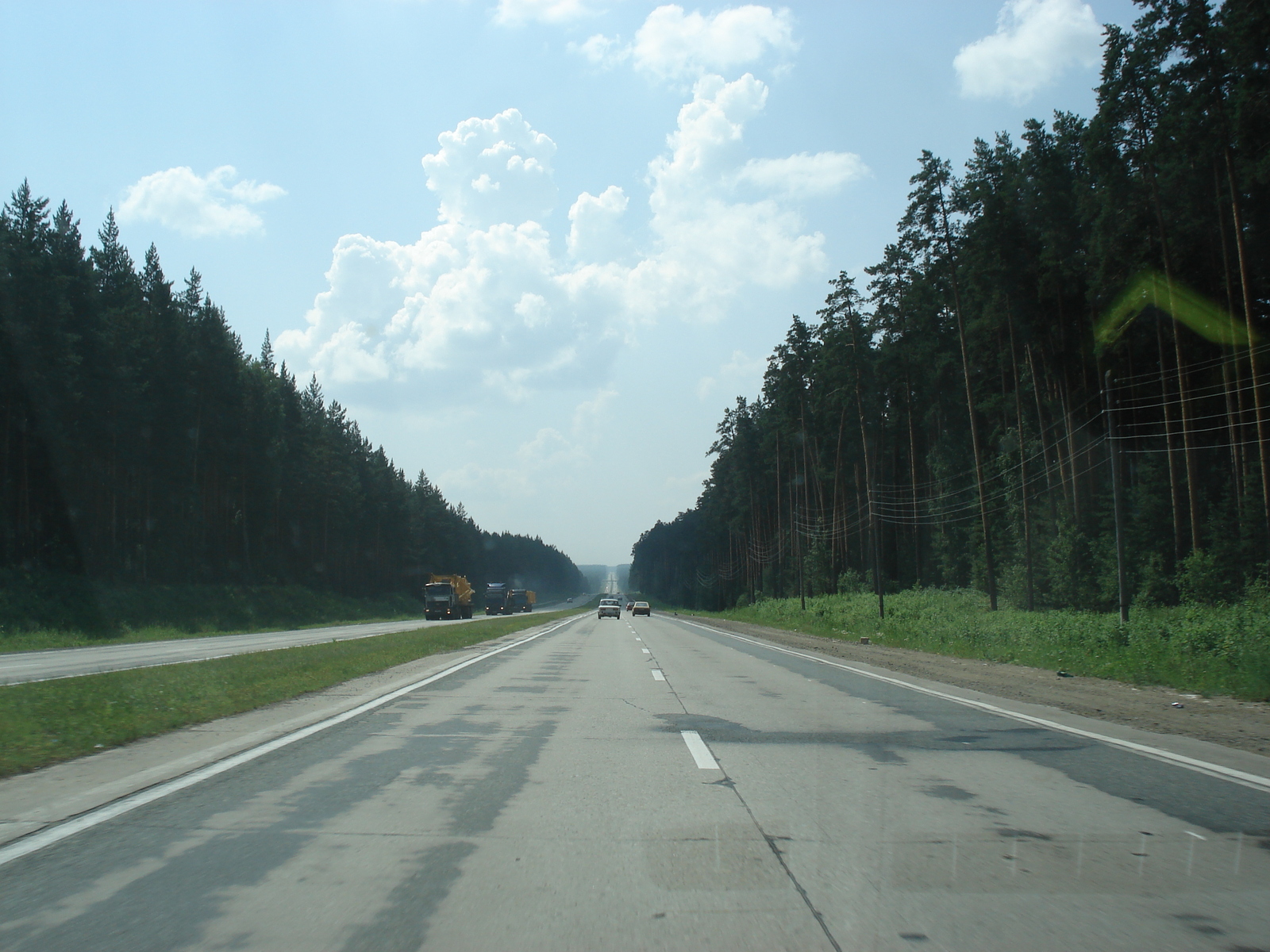 Through the wild character of the islands, only a few roads and rails were built. Roads are connecting the cities and some tracks lead into the wilderness. The four biggest islands have each at least one highway, which connect the bigger cities.
Through the wild character of the islands, only a few roads and rails were built. Roads are connecting the cities and some tracks lead into the wilderness. The four biggest islands have each at least one highway, which connect the bigger cities.
There is no speed limit on the highways, but if too high speed leads to the harm of an animal, the driver's license can be removed and jail penalty is possible. Overland trains are connecting the cities. A projected underwater tunnel to connect the islands was stopped because of the negative influences on the environment. Cities sport an extensive net of public transport. Misor has an international airport and a regional one, Kalimdra and Alandron regional ones. The traffic between the islands concentrates on ferrys, rigid airships and helicopters.
The Laywenranian "..." fields:
- the MW-155, a three-engine medium-range narrow-body airliner, with a range of 5'300 km, a travel speed of 850 km/h and a capacity of 144 passengers
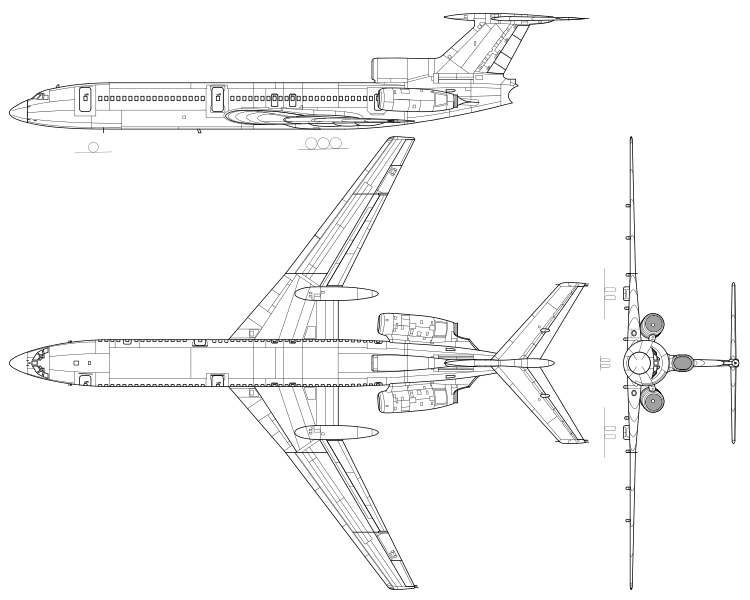
- and the MW-196, a four-engined long-haul wide-body airliner, with a range of 10'000 km with maximum payload, a travel speed of 870 km/h and a capacity of 237 passengers

Tourism is a significant contributor to the Laywenranian economy and is focused on the country's natural landscapes and its culture and history. Popular activities and places are:
- Camping and Hiking in the mountains
- Coast resorts, especially Alandron, Cosesti, Efoma
- Medieval city cores
- Medieval festivals
- Steul Delta
- Museums
- Folklore
The culture of Laywenrania is a unique culture, which is the product of its geography and its distinct historical evolution. Even after ages of oppresion, the Laywenranians kept their national identity and cultural heritage. The Laywenranian folk is very traditional and keeps the old rites and traditions. Through the ages the traditions have to be carried out in secret. Anyway there is now a rich cultural live florishing, largely supported by the government. The Laywenranian Culture is heavily influenced by romanian culture with some minor german characteristica.
The film industry in Laywenrania is relatively small. Well-known are the documentaries, which are presenting knowledge in a enjoyable manner. The most-viewed entertaining films are modern military action movies and historical dramas, mostly produced by the "Foralsia Filmstudios". Foreign movies are rather rare. There are multiple TV-channels, most of them are dedicated to a special branch, like the history channel and are run by the state. Laywenranian movies are not exported widely, as they generally do not fit in the "exaggerated" scheme of foreign movies. There is also a state controlled adult movie industry, which produces High-quality movies for nearly every taste.
The ancient literature is mostly kept in the archives and get's now carefully restored. Only a few pieces were produced or could be kept save from the oppressors. The National Archives hopes to reproduce soon some of the great historical creations. Because of the strict rules employed over Laywenrania during the Time of Colonization, very few authors were brave enough to publish books in Laywenranian. Their names are forgotten, but their spirit will forever live in their books. The one book, which is viewed as Laywenranias greatest treasure is the "True and Uncensored History of Laywenrania, her children and her heritage". It is written by an unknown author probably during the 16th Century. Although bookprinting was already available, it is entirely handwritten and illustrated, describing the history of Laywenrania from it's beginnings. Another book was written in the same manner in the 1920s, during the beginning uprisings against Por-Or, describing the events from the 16th Century to 1920. Modern literature has a broad range, from scientific books over small booklets with pictures for kids. Nowadays there are some great writers, which sell a lot of their books, the main part in the novel branch. From Sci-Fi to Historical Dramas, from fantasy to love novels, there is a broad offer of books and themes.
In the big cities are multiple theatres, orchestras and cinemas, playing different pieces of music, movies etc. The biggest theatre is the "Tschaikowskytheater", which employs the best-known actors and the reputable "State orchestra". Multiple classical masterpieces from all over the world are played here. In many cities, one can find small clubs were less known bands play varying pieces of music. One of the traditional instruments is the bagpipe. One of the most renown componists is Eadric Orlov, who wrote the music for the national anthem. Another componist, who is perceived as one of the greatest componists of Laywenrania, especially for his pieces for bagpipes and drums, is Kyrill Sokolov. They both lived during the 18th century. Modern well known artists and bands are Pysh (electronic music), Rukhver (rock), Anton Nicolescu (classic) and Refar (electronic).
The national sport in Laywenrania is rugby. Nearly every city has at least one team and to the yearly national championship, the stadion in Misor is always sold out (350'00 seats) and many are watching the live-transmissions of the event. There are 3 leagues, Divizia 1 to 3. The current Champion is "RR Misor".
Meat is a very important factor in the Laywenranian cuisine. Many meals feature it and vegetables are generally only viewed as a side dish. A well-known sweet is a pie, which is filled with plums and covered with crumbles. One of the most popular meals is "Bratwurst", a sausage, made after an ancient traditional recipe, usually sticking in a bap. Other dishes are Schnitzel, pork with Thuringian dumplings and Pilaf. Traditional dishes are a roast goose with red cabbage (served on Sylvester), roulade and goulash. Dumplings are a very common side dish. A usual bread is a crusty bread, common cold cuts are salami, cheese, honey and chocolate. Common drinks are mineral water, coke, apple juice and herbal tea. There is traditionally no alcohol consum in Lawenrania and it is prohibited by Law to import alcohol. A typical breakfast consists out of baps with cold cuts and jam or cereal, usually with a glass of milk and a cooked egg. The lunch is usually a hot meal and the whole family sits together (if possible). The dinner is traditionally bread with cold cuts and tea. Gherkins are a common "snack".
06.01. Sylvester
07.01. New Year
17.03. Flower festival
03.05. Penguin festival
06.07. Sun festival
05.08. National holiday
02.09. Wolf festival
12.10. Death remembrance festival
23.11. Festival of the night
15.12. Day of the family
Official Symbols:
| Type | Image | Symbol |
|---|---|---|
| National Flag |

|
s a tricolour with vertical stripes: beginning from the flagpole, blue, red and yellow, these colors found on shields and banners representing Laywenranians everywhere. During the Laywenranian uprising of 1921 these colors composed the revolutionaries’ flag and for the first time a recorded meaning was attributed to them: “Liberty (sky-blue), Justice (field yellow), Fraternity (blood red)”. |
| National coat of Arms |

|
The Coat of arms of Laywenrania The red shiels symbolises the blood, which was sacrificed to protect Laywenrania's Independence. The both adult penguins symbolise Quelaan and the Chairman protecting the child penguin Laywenrania. |
| National Anthem | - | It was written and published during the 1920s revolution and was first sung in late June in the same year, being immediately accepted as the revolutionary anthem. Since then, this song, which contains a message of liberty and patriotism, has been sung during all major Laywenranian conflicts |
| Military Flag | - |
The military colors are the symbol of military honor, bravery and glory. They evoke the past struggle of the Laywenranian people for national liberty and the traditions of unity, reminding each soldier of his sacred duty to serve the Motherland with trust, and to defend at all costs the unity, sovereignty and independence of Laywenrania |
| National Holiday | - |
Independence Day It commemorates the independence of the Laywenranian People reached through the Revolution against the Oppressor. |
| Official Language | - | Laywenranian |
Inofficial Symbols:
| Type | Image | Symbol |
|---|---|---|
| National Personification |
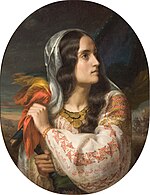
|
Revolutionary Laywenrania |
| National Motto | - | "Justice, Brotherhood" |
| Floral Emblem |

|
Sakura |
| National Animal |

|
Penguin |
| National Bird |
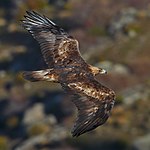
|
Golden Eagle (mountain aquila) |
| National Tree |
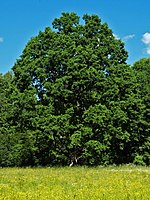
|
Oak |
| National Dress |

|
|
| National Sport |

|
Oină |
| National Guard Regiment | - | |
| National Dance |
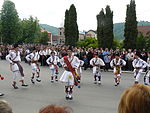
|
Căluș |
| National Instrument | Bagpipe |



